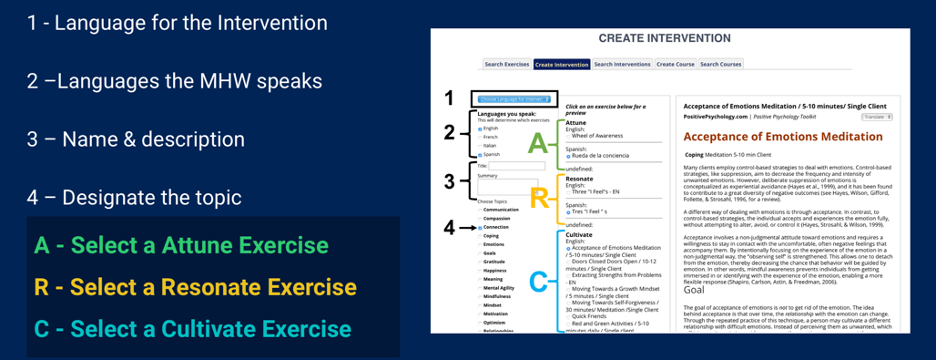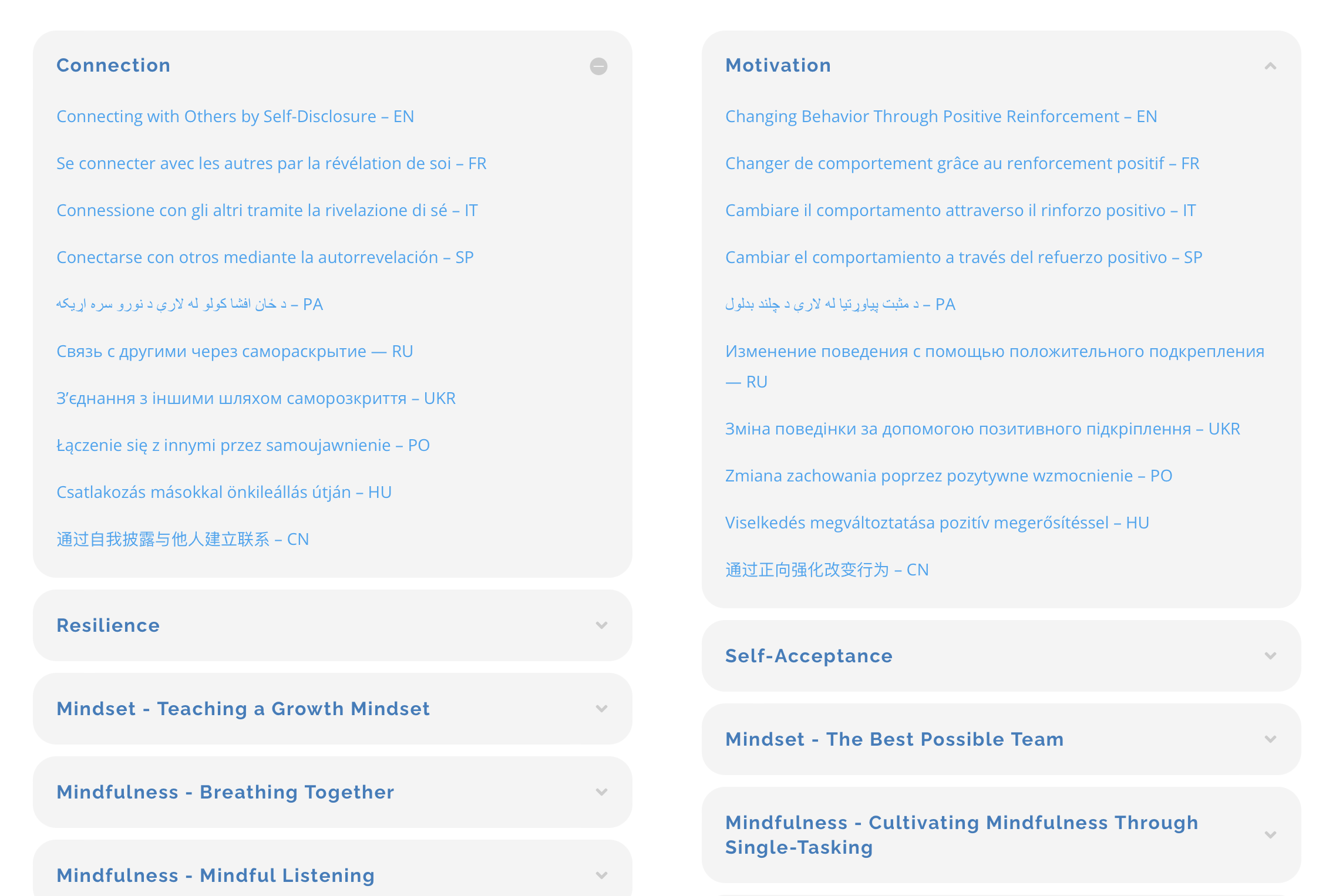Design & Build Dashboard

We believe that our proprietary design tools are one of the greatest strengths offered by the L2T program. Creating an effective intervention is both a technical and adaptive challenge. As noted at the conclusion of a 2019 UN Report discussing the mental health needs of the Rohingya refugees, relief organizations need to become skilled in making partners of the refugees in the design of their recovery programs. L2T focuses on a collaborative approach to create the dialogue needed to teach Mental Health Workers to listen and learn from their patients.

In the graphic to the right, the Design & Build tools use a concept for building interventions called the ARC Process. It draws its inspiration from the work of Dr. Daniel Siegel and his work with Attachment Theory and trauma. Dr. Siegel helped pioneer a body of research that has become known as Interpersonal Neurobiology. Back in the 1990s, Siegel realized that one handicap in cross-discipline conversations discussing the brain was there was no agreed-upon definition of the mind. He decided to develop one to help facilitate these conversations so they might lead to consilience when discussing the brain and mental health. Below is the definition he has continued to refine over the past 30+ years:
THE MIND IS AN EMERGENT, SELF-ORGANIZING, EMBODIED, AND RELATIONAL PROCESS THAT REGULATES THE FLOW OF ENERGY AND INFORMATION.
The chart below describes the three steps in an ARC intervention.

As part of his own research into “the mind”, Dr. Siegel (Mindsight Institute) has developed a tool he calls the Wheel of Awareness. His tool is a key Attuning exercise that strengthens a person’s skills in identifying, then differentiating the sources of energy and information that shape a person’s mental/emotional environment. Developing the skill to differentiate these various sources of energy and information expands a person’s self-awareness so that no one source is perceived as comprising the “whole self”. In effect, the Wheel exercise strengthens a person’s ability to get on the balcony of their experience and see themselves “in the on-going action of living”. Some psychologists refer to this ability as a person’s inner “witness.”
In the context of trauma recovery, the Wheel of Awareness serves as the first step in strengthening a refugee’s skills needed to re-integrate the different sources of information and energy, boosting their mental resilience. By guiding an individual’s attention towards their senses, their bodily sensations, their mental activities, and ultimately their sense of interconnection, they are gently guided to become more in touch with their experience of past trauma. A trauma survivor forms linkages between with their inner self and the world around them. It is re-establishing this self-awareness that healing slowly begins as a person begins to “feel felt”.
L2T currently incorporates the Wheel of Awareness exercise into the Attune step of each intervention because its mindfulness approach is intentional rather than random and arbitrary. The Resonate component of an intervention moves the refugee from the interior work done through the Wheel to the exterior experience of a small group. Each refugee is invited to share their Wheel experience at a pace they choose and give voice to their feelings. Finally, in the Cultivate part of the intervention, the ARC Process customizable Cognitive Behavioral exercises focused on topics such as connection, mindfulness, mindset, motivation, resilience, and self-acceptance to cultivate greater skills with self-awareness.
Refugees and mental health workers have great flexibility within the ARC framework to construct interventions and courses in the way they see best fits their context and culture. Through the tools available during the Design & Build phase, the design process itself is simple enough to be implemented with relatively little specialized training required because all exercises have already been through an evidence-based process.

Please Register to view the Design & Build Dashboard (etc). Once registered you will be able to go directly to the Dashboard via the Menu at the top of the page.
Exercises Preview
(Please log in to read all the exercises)

